In the 45 years since the series went off the air, the second Star Trek television series has been often overlooked by fans — and the franchise itself — when thinking back on the decades of Federation storytelling.
Star Trek: The Animated Series was the last show to make it to DVD back in 2006, following all its live-action counterparts, it took almost 30 years of releases for Hallmark to bring any of its characters into the long-running holiday ornament line, and there’s never been much of a focus on the series in print, despite the dozens of other Star Trek reference works published over the years…
…until now, that is! Next week, publisher Weldon Owen will finally be releasing the first all-encompassing guide to the 22 episodes of hand-drawn tales with Star Trek: The Official Guide to the Animated Series, a new hardcover book from authors Aaron Harvey and Rich Schepis.
With Star Trek animation making a big comeback in the next few years — from the upcoming animated Star Trek: Discovery Short Treks expected this fall, to Star Trek: Lower Decks in 2020, and the still-untitled kids show in development now for Nickelodeon — it’s the perfect time for this book to arrive, shining a spotlight back on the history of Trek animation as those new projects ramp up.
We had the opportunity to catch up with Harvey and Schepis a few weeks ago to preview the new Star Trek: The Animated Series guidebook ahead of next week’s official release.
TREKCORE: Aaron, you have something of a reputation as a big fan of The Animated Series. I can imagine that this has been quite a passion project for you?
AARON HARVEY: Yes. If we hadn’t been passionate about it at some point we probably would have just walked away, because it was a lot of work. It’s a lot of fun, but getting all of the interviews in the book was hard work.
Anything from the 1970s in Star Trek is really an interesting time to try and verify information. If you read the history of Star Trek: The Motion Picture, it’s amazing that movie ever got made. And if you listen to five different people, they will tell you five completely different stories about the same events.
The 1970s is a really interesting time in Star Trek, with The Animated Series being a huge part of it, especially since I grew up in an age where you couldn’t just go to the internet and pull up information on it. You would tell somebody there was a Star Trek: The Animated Series and they might not believe you, which is how the tagline in my podcast Saturday Morning Trek came about: “Yes, there IS an animated series.”
I think we took a poll when we first launched the podcast, and there were a good number of people who didn’t even know it existed.
RICH SCHEPIS: Aaron touched on something that I think is really important. We mention it a little in the book, because there have been so many people and assets that have been lost over time; it was almost fifty years ago that The Animated Series premiered.
In the Deep Space Nine documentary “What We Left Behind” that premiered earlier this year, Andrew Robinson [Garak] has that line at the end of the movie talking about truth, and how everybody remembers things differently.
So, we’re talking to people like [layout artist] Bob Kline, [publicist and writer] Fred Bronson, [writer] Howard Weinstein, and [writer and script editor] David Wise, and we have to take these stories from what they remember.
Sometimes, though, people misremember things, or have one perception of how the conversation went and it didn’t really go there. So, we did our best in the book. Everything is fully attributed, and we did our best to make sure we could prove as much as we could.
The fun part of the book is going to be looking at it and saying “Oh, I didn’t know that happened.”
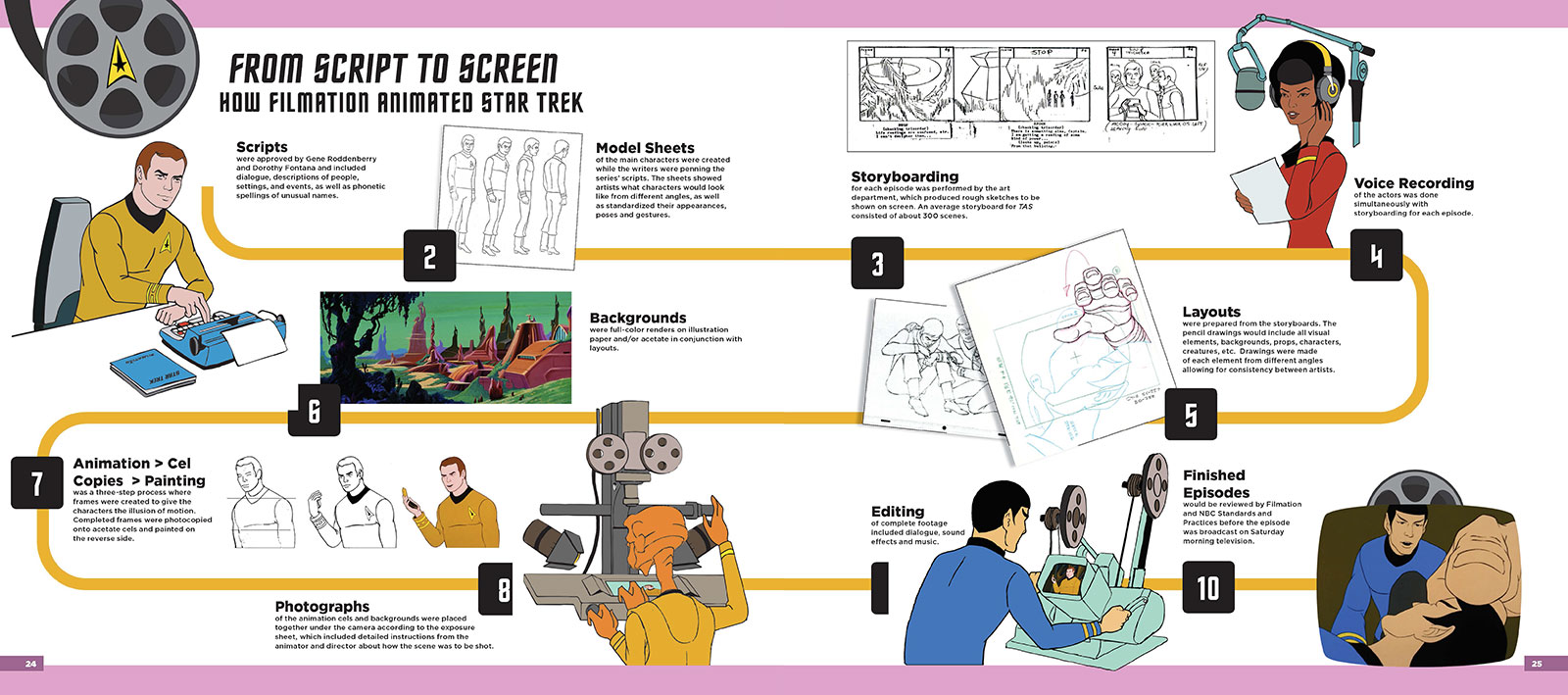
TREKCORE: What can readers who pick up this book expect to learn about The Animated Series?
HARVEY: We were trying to definitely include something from behind the scenes of each episode. We have a section called “Fascinating,” which is just little facts that might not fit into any main narrative, so there’ll be something about why a specific voice actor was used or things like that.
We had a real boon when Fred Bronson found all of the press releases he had written for The Animated Series and gave them to us.
SCHEPIS: Because Fred was such a big fan of Star Trek when he was the publicist for NBC, his job was publicizing and writing press releases to send to newspapers and TV Guide. We came across some great interviews in those releases, including interviews from Gene [Roddenberry] and Matt Jefferies that, for the most part, never saw the light of day. And now we’ve got a goldmine of interviews from people that have probably never been seen in 50 years. We were really happy to get a hold of that.
HARVEY: And Fred Bronson, by the way, is the person who wrote “The Counter-Clock Incident” under the pseudonym John Culver, because at the time he was also the series publicist, and they didn’t want the impropriety of the publicist also writing an episode.
SCHEPIS: Yeah, we’ve got a great story about his writing that episode in the book. Another thing, as someone that liked The Animated Series but didn’t have the same background on it as Aaron, is that you do learn a lot about how it was produced.
I was so impressed when I was talking to [associate producer and story editor] Dorothy Fontana and [writer] David Gerrold, and just how much they stressed that “Hey, this is Star Trek. It’s a shorter episode, but this is Star Trek.” And you can see that on the screen.
By today’s sensibilities the production values are a little different, but if you watch the show and the stories some of them are just as strong as those classic episodes of the Original Series.

TREKCORE: Some discussion of The Animated Series has implied that there was some tension between production team members who came over from the Original Series, and some of the Filmation executives who saw TAS as ‘just another cartoon.’ Is that an accurate?
SCHEPIS: We never got that sense. [Filmation co-founder] Lou Scheimer came to Gene with a bunch of ideas and Gene said, “No, we’re doing Star Trek.” But when they were actually making the show, we got to talk to directors, storyboard artists, the writers, producers, and none of that stuff was even a factor. They were trying to make the best show possible.
HARVEY: And the people involved, like Bob Kline, were huge Star Trek fans. He knew specifically where this was the rule for how the nacelles works, this is how insignia badges are supposed to be. He was just as much of a quality assurance person as Dorothy Fontana was in terms of what is and isn’t Star Trek.
SCHEPIS: From a production standpoint, there was never a sense of that. I think a lot of that was just urban legend that’s built over the years. It’s actually Star Trek; it was produced by the people that made Star Trek. Gene oversaw the scripts. He made revisions.
There are urban legends out there from people that said “Well, Gene said this wasn’t canon” but Dorothy [Fontana] never had a conversation with him in which he said “This isn’t Star Trek.” And he treated it like that. She treated it like that.
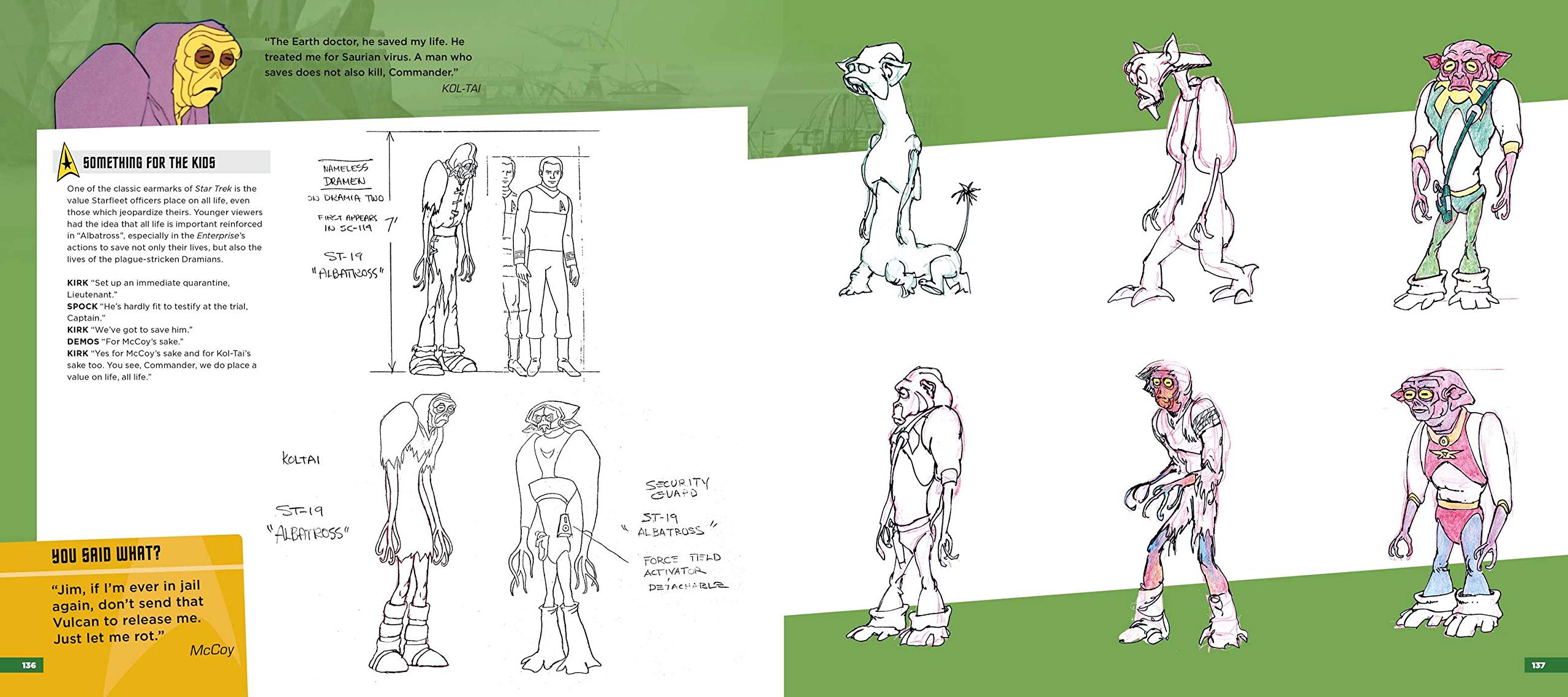
HARVEY: I think the main thing that we discovered is that they were working under a tight schedule, and they had to get the stuff out. Everyone wanted to take more time, but they just didn’t have the bandwidth for it.
SHCEPIS: And the Orignal Series was like that too; it’s just the nature of television production. Filmation had their way of making cartoons, which they brought over to the Star Trek show, which works really well. The likenesses look great, the bridge looks like the bridge, the Enterprise is the Enterprise.
Then there’s also a guy like Bob Kline, who was able to add new designs that fit the Star Trek aesthetic. There’s one ship, the USS Bonaventure, which was Bob’s design.
HARVEY: Or the cargo vessel in “More Tribbles, More Troubles.” That is actually Mike Okuda’s favorite ship, which then got ret-conned into the Original Series when they remastered the series.
SCHEPIS: And that was all because Bob was a big fan, and when he was designing the ship he had an eye on what would make a good Starfleet vessel.
TREKCORE: You each came to this project with different levels of knowledge about The Animated Series. What would you say was the most surprising thing you learned during your research process?
SCHEPIS: I think the most interesting thing was in regards to the episode “How Sharper Than a Serpent’s Tooth,” which won an Emmy, and how it came to be. We talked to episode writer David Wise about that episode, unfortunately his co-writer Russell Bates is no longer with us.
In the book we covered how the episode went through the pitch process and how Dorothy [Fontana] helped them get it right. And that, for me, was one of the coolest things. For me, it’s the interviews. Learning about the show from the people who made the show. I just ate that part up.
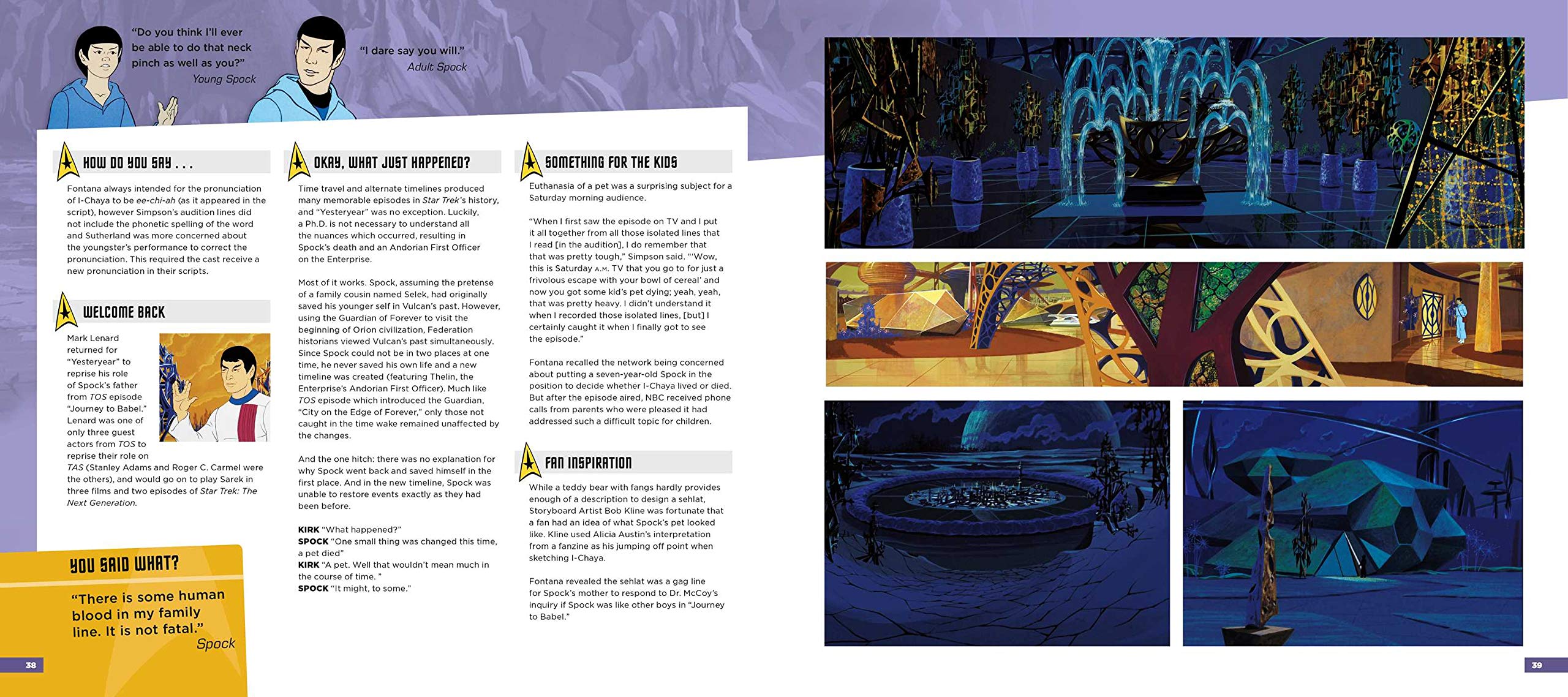
HARVEY: One interesting thing that we found — that we didn’t incorporate into the book, because it didn’t quite fit what we were doing — is that there is always a part of fandom that will find something and push back against it. There was actually, at some of the first conventions, people saying that The Animated Series wasn’t ‘real’ Star Trek.
It was so much like listening to people talk about Star Trek: Discovery or Star Trek: The Next Generation. It was frightening.
I’m also going to tease something else we found out, which is that there is a specific character in the last episode of The Animated Series that was inspired by another Filmation character. I was scanning all these documents that Bob Kline had given us, and I found what appeared to be a slide that was misfiled, until I realized that the person on the slide looked really similar to somebody on the show. And when I talked to Bob, he told me the character in the slide must have inspired it and that’s why it was in there.
TREKCORE: For those who have never seen the show, how would you encourage a newcomer to check out The Animated Series for the first time?
SCHEPIS: If you are a fan of the original Trek characters and want to see more of those stories, The Animated Series is the fourth season of classic Trek, at least for me. You get to see more of those characters; you get to see Uhura in a different role, but you also get to see the familiar relationship between Kirk, Spock and McCoy, and that’s one of the things that draw people to Star Trek.
If they love the Original Series, but never saw the show, this book is a no-brainer because it’s going to give you more information about behind the scenes of how The Animated Series was made largely by the same people who made the first series.
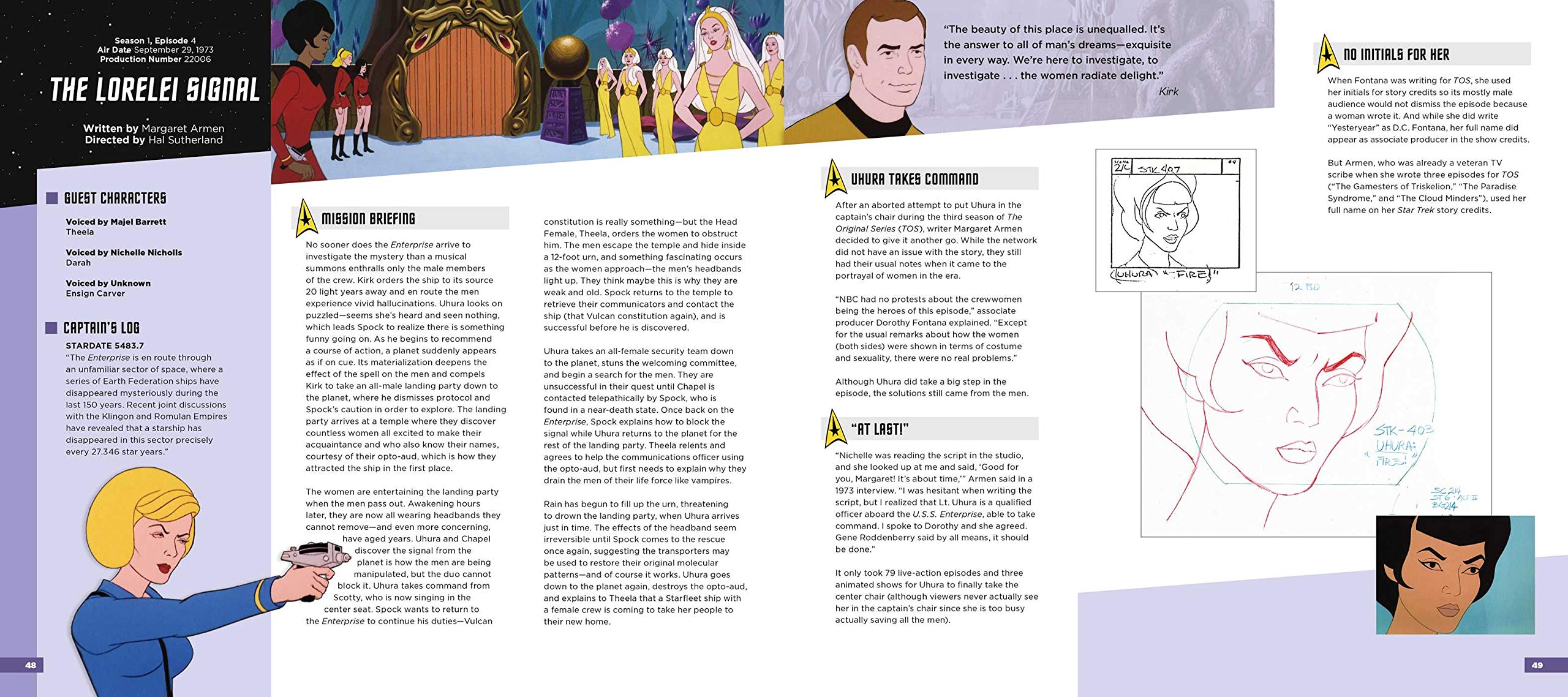
HARVEY: I think of it as finding 22 lost episodes of the Original Series. Who wouldn’t want that? Sure, some of them are going to be on the level of “Spock’s Brain,” but some of them are up there with “The City on the Edge of Forever,” but either way it just adds to it.
There’s a lot of things that become a part of Star Trek canon because of The Animated Series – Kirk’s middle name for example — and there are so many original voices, both literal and creative, that put together the Original Series and later helped on The Animated Series.
You’re probably going to like them both if you like the original, and to me, it’s just historically interesting to see how an adult evening television show was translated into a show for all ages in the 1970s… and how sophisticated and grown up it was compared to similar shows of the era like The Brady Kids or Emergency +4.
TREKCORE: It’s pretty clear that the Star Trek: Discovery writing team are fans of The Animated Series, as they’ve included a few references calling back to that show already. Is there anything which originated in TAS that you’d like to see today’s live-action Trek shows bring to life?
HARVEY: I want to see an Edosian — that’s Lt. Arex’s species — now that we have the technology to do that! I think seeing that race would be really interesting.
There’s also the Vendorians, and it would be interesting if we’re going to use shapeshifters in some way to bring those back. Interaction with them is outlawed by the Federation at the time of The Animated Series, so it would be interesting to dive into that a little bit.
SCHEPIS: One of the things I would love to see is getting to see Uhura in the captain’s chair, like we saw when she took command of the Enterprise in [“The Lorelei Signal”]. Maybe they could translate that to Number One and have her in command. Obviously, the 1960s and 1970s were a different time, and we’re seeing how the transition of storytelling is more open, as it should be. I think that would be really cool, to have gotten to see that.
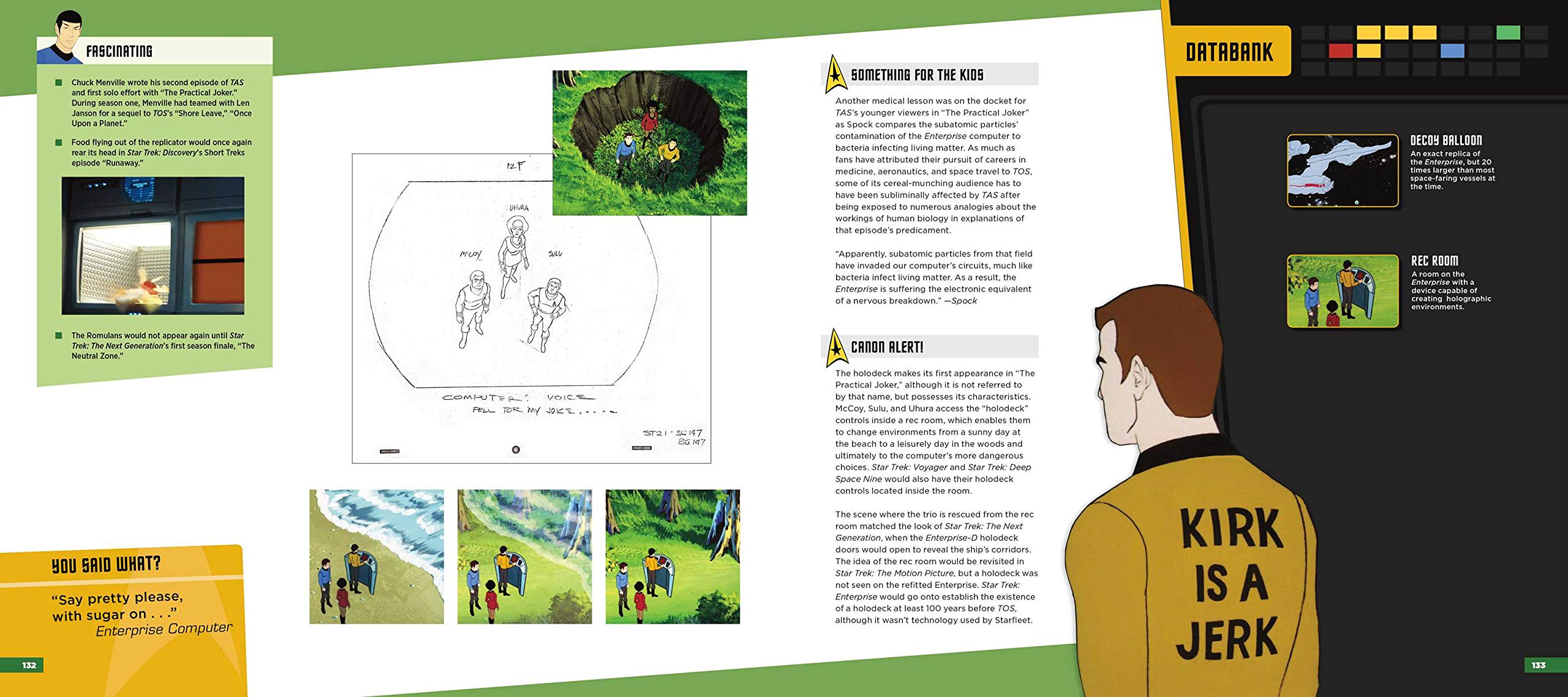
TREKCORE: Any last comments about your love for The Animated Series?
SCHEPIS: This book is a celebration of Star Trek. We were both very honored to be able to add our names to the legacy of Star Trek. It’s very surreal, but everything we put in this book was to celebrate not just The Animated Series, but the whole legacy of Star Trek.
We’ve both been impacted personally by this mythology that Gene started and that people like Dorothy Fontana and David Gerrold took those torches and carried them forward. We’re very honored, and everything in the book is designed to celebrate the awesomeness of what Star Trek is and what it means.
I think that’s the one big thing that got out of writing this book — having the ability to share those stories, to share those meanings, was joyous. I was really happy to be able to write some of these sections where we dive in a little deeper about what the point was for the episode or what came out of it from that analytical standpoint. And when you’re looking at other 1970s cartoons, which had no meaning to them.
The Animated Series wasn’t like that – this was animated Star Trek.
![]()
Star Trek: The Official Guide to the Animated Series arrives from publisher Weldon Owen on September 3, and can be preordered at the links below. Watch for our review of this new book in the coming weeks!



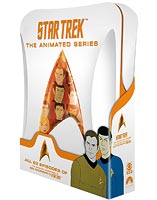 'The Animated Series'
'The Animated Series'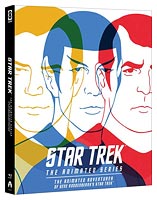 'The Animated Series'
'The Animated Series'
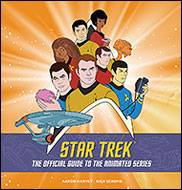 'The Official Guide to
'The Official Guide to